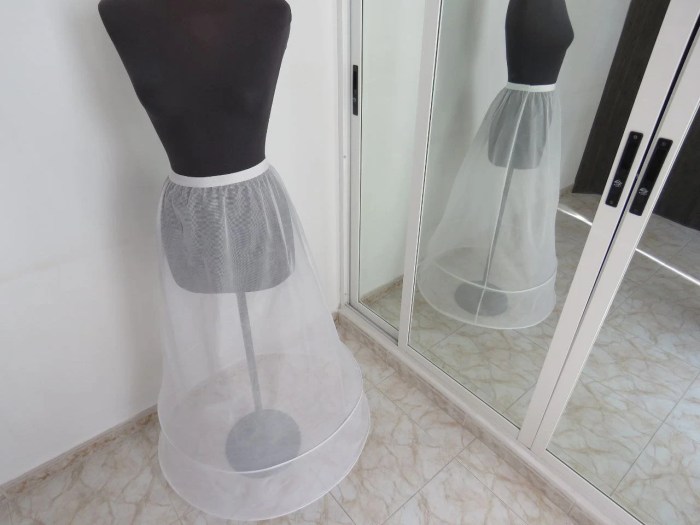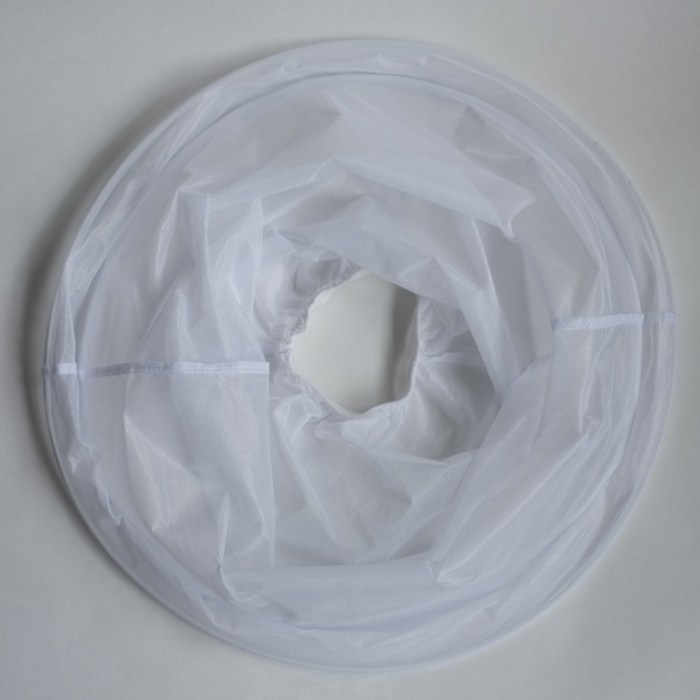Hooped Petticoats: Enhancing the Elegance of Wedding Dresses: Hooped Petticoat For Wedding Dress

Source: etsystatic.com
Hooped petticoat for wedding dress – The hooped petticoat, a garment that has graced bridal attire for centuries, plays a pivotal role in shaping the silhouette and adding volume to wedding gowns. From its historical origins to modern interpretations, the hooped petticoat offers a unique opportunity to create a truly stunning and memorable bridal look. This article delves into the intricacies of hooped petticoats, exploring their history, construction, styling, and considerations for choosing the perfect one for your wedding dress.
Understanding Hooped Petticoats, Hooped petticoat for wedding dress
Hooped petticoats have a rich history, evolving from the farthingales of the 16th century to the crinolines of the Victorian era and the cage crinolines of the 1950s. These structures, designed to give skirts their shape and volume, were initially made from materials like whalebone, linen, and horsehair. Over time, the materials used have transitioned to include cotton, silk, nylon, and modern plastics, each offering unique properties in terms of flexibility, durability, and weight.
Hooping techniques have also changed significantly. Early petticoats used individual hoops or a series of interconnected hoops sewn into the fabric. Modern techniques often incorporate flexible hoops or multiple layers of netting to achieve a similar effect, offering greater comfort and ease of movement. Modern hooped petticoats prioritize comfort and ease of wear compared to their historical counterparts, which were often quite restrictive.
While historical versions might emphasize a dramatic, wide silhouette, modern ones allow for a more tailored approach, adapting to different dress styles and body types.
Hoop Petticoats and Wedding Dress Styles

Source: cloudfront.net
Hooped petticoats complement a variety of wedding dress styles. Ballgowns, A-line dresses, and even some mermaid styles benefit from the added volume and shape provided by a petticoat. The size and shape of the hoop significantly impact the overall look; a larger hoop creates a fuller, more dramatic silhouette, while a smaller hoop offers a more subtle enhancement. Heavier fabrics like satin or brocade will interact differently with the petticoat than lighter fabrics like chiffon or tulle.
Embellishments such as lace or beading on the dress can be further enhanced by the subtle movement and shape created by the petticoat.
| Hoop Size | A-Line Dress | Ballgown | Mermaid Dress |
|---|---|---|---|
| Small (subtle volume) | Soft, natural fullness | Subtle enhancement of existing volume | Adds a hint of fullness at the hip |
| Medium (moderate volume) | Defined A-line shape | Noticeable increase in skirt volume | Creates a more pronounced flare |
| Large (dramatic volume) | Very full and flowing skirt | Extreme volume and dramatic silhouette | Not recommended; may overwhelm the style |
Creating a Hooped Petticoat for a Wedding Dress
Designing and constructing a hooped petticoat requires careful planning and precision. For an A-line wedding dress, a petticoat with a gradual increase in volume from the waist to the hem would be ideal. The pattern should account for the desired length and circumference, ensuring a comfortable fit. The process involves cutting the fabric according to the pattern, sewing the pieces together, and then attaching the hoops.
This could involve using a series of individual hoops sewn into channels, or a flexible hoop structure that maintains its shape without stiff individual hoops.
- Cutting the Fabric: Using the pre-determined pattern, cut the fabric pieces for the petticoat body. Allow for seam allowances.
- Sewing the Body: Sew the fabric pieces together, creating the basic petticoat shape. Press the seams for a clean finish.
- Attaching the Hoops (Individual Hoops): Create channels within the fabric for the hoops. Insert and securely stitch the hoops into these channels. Ensure the hoops are evenly spaced for a consistent silhouette. A visual aid would show the hoops sewn into channels along the seams of the petticoat.
- Attaching the Hoops (Flexible Hoop): Secure the flexible hoop structure to the waistline of the petticoat using strong stitching or elastic. This method requires less sewing but relies on the structural integrity of the flexible hoop.
- Finishing Touches: Hem the bottom of the petticoat and add any desired embellishments, such as lace trim.
Considerations for Choosing a Hooped Petticoat
Selecting the appropriate hoop size and style depends on several factors, including the wedding dress style, the bride’s body type, the venue, and the climate. Plastic hoops are lightweight and flexible, while metal hoops offer more structure but can be heavier. Boning provides a more subtle shaping effect. In a hot climate, a lightweight petticoat made from breathable fabric with plastic hoops would be more comfortable than a heavy, structured petticoat with metal hoops.
A larger venue might accommodate a more dramatic silhouette than a smaller, more intimate setting. Determining the correct length and circumference involves measuring the wedding dress and ensuring the petticoat is slightly shorter to avoid showing underneath.
Styling and Maintaining a Hooped Petticoat
A hooped petticoat can be styled with various wedding dress accessories, such as belts or sashes, to further enhance the overall look. Proper care involves hand-washing or dry cleaning the petticoat, depending on the fabric. Storage should involve keeping the petticoat clean, dry, and away from direct sunlight to prevent damage and maintain its shape. Potential issues, such as damaged hoops or fabric tears, can be addressed through careful repair or replacement.
FAQ
Can I wear a hooped petticoat under a slim-fitting wedding dress?
While a very large hoop might not be suitable, smaller hoops or crinolines can add subtle volume and shape to a slim-fitting dress, creating a more flattering silhouette. Consider the fabric weight and structure of your dress when making your selection.
How do I clean a hooped petticoat?
Check the care instructions on the label. Generally, hand-washing in cool water with a gentle detergent is recommended. Avoid harsh chemicals or machine washing, as this could damage the hoops or fabric.
Where can I find high-quality hooped petticoats?
A hooped petticoat can dramatically enhance the shape and volume of a wedding dress, creating a truly elegant silhouette. Consider the overall aesthetic; if you’re aiming for a rich, sophisticated look, you might pair it with a stunning gown, perhaps even a burgundy dress for weddings , which would offer a bold and unexpected contrast. Ultimately, the right petticoat depends on the style of your chosen wedding dress and your personal preference for fullness and shape.
High-quality hooped petticoats can be found at bridal boutiques, specialty lingerie shops, and online retailers specializing in bridal accessories. Look for reviews and customer feedback before purchasing.
What if my hooped petticoat is too long?
A slightly too-long petticoat can easily be hemmed by a seamstress or even yourself, if you have basic sewing skills. Ensure to maintain the evenness of the hoop placement during alterations.
